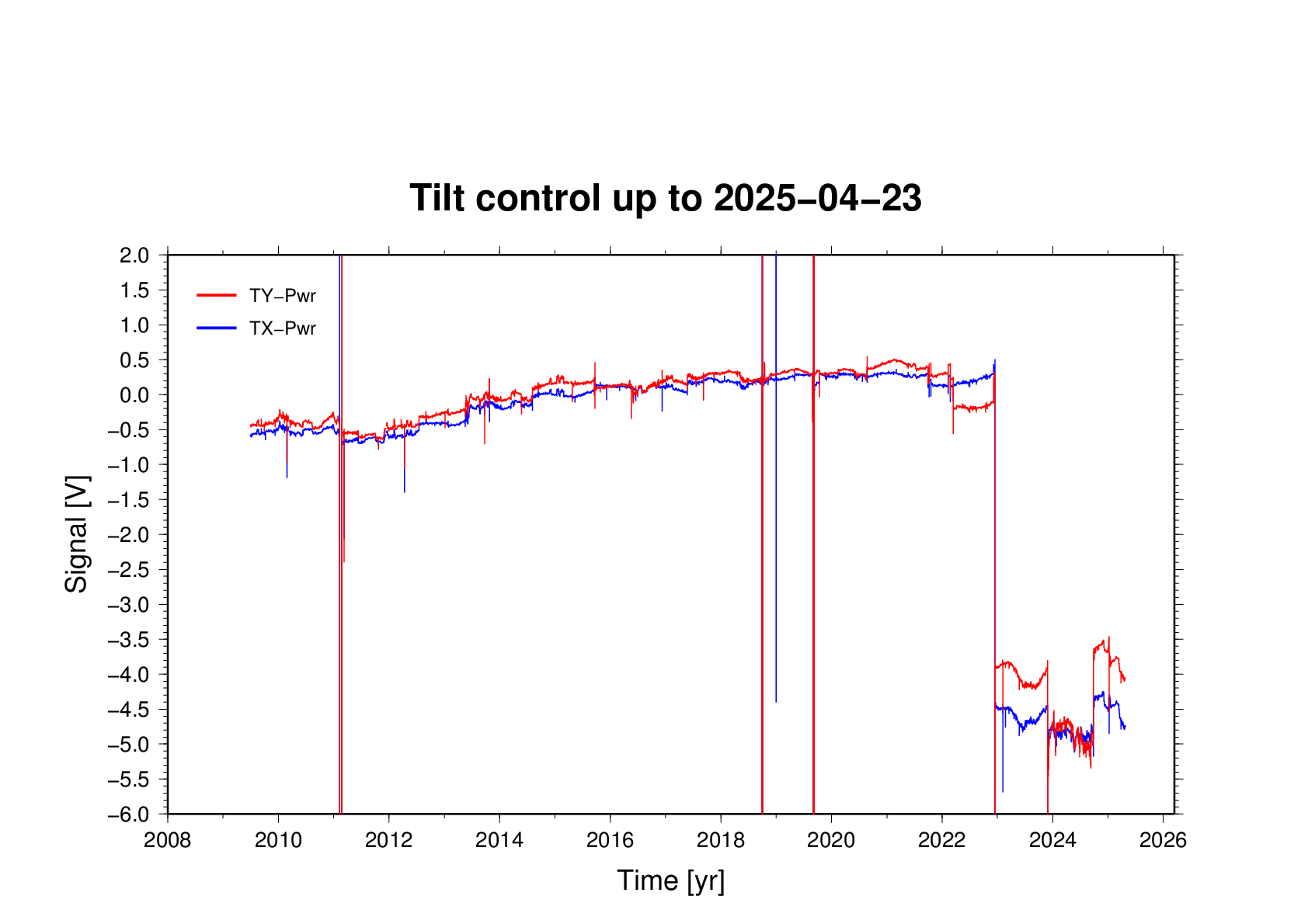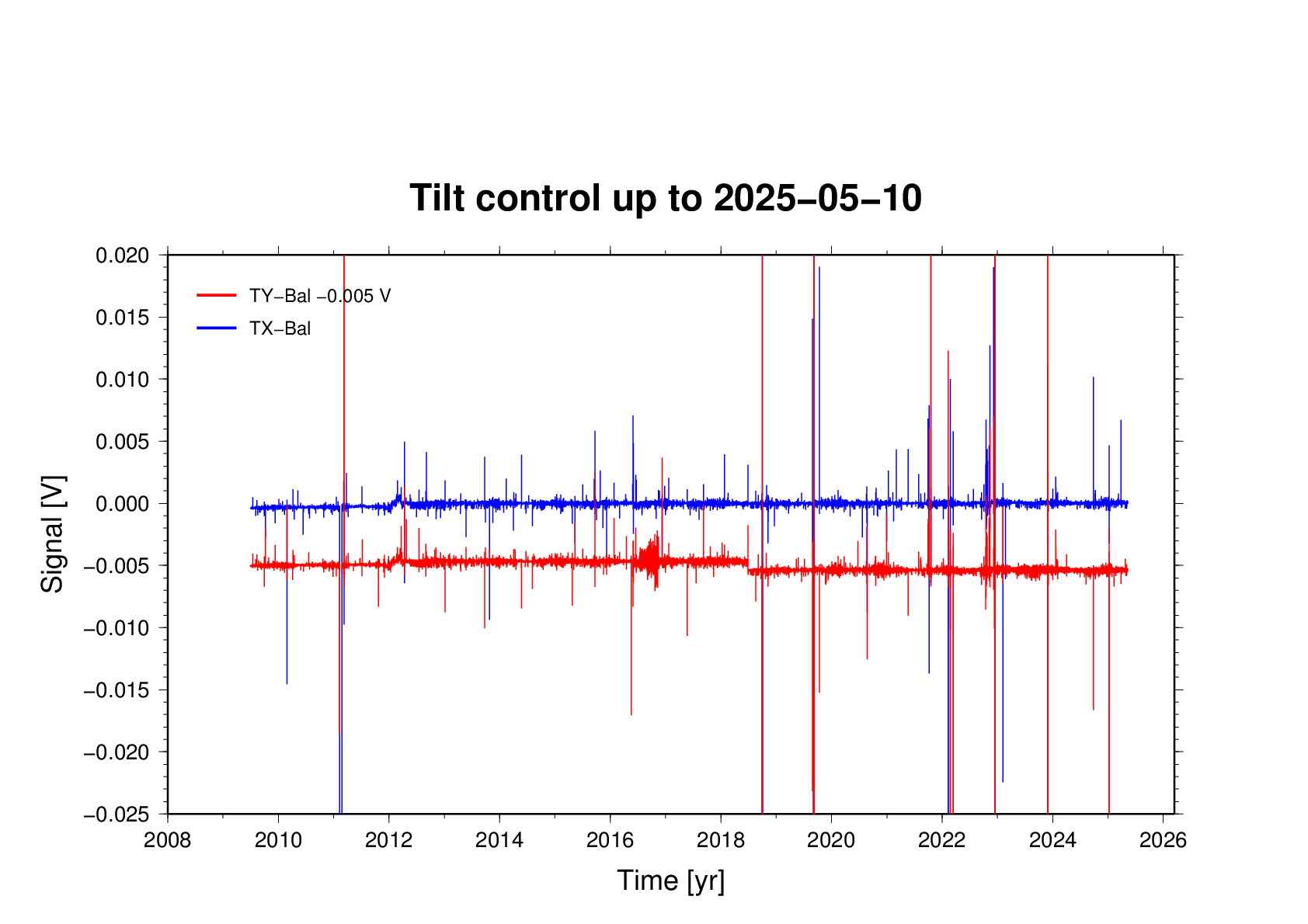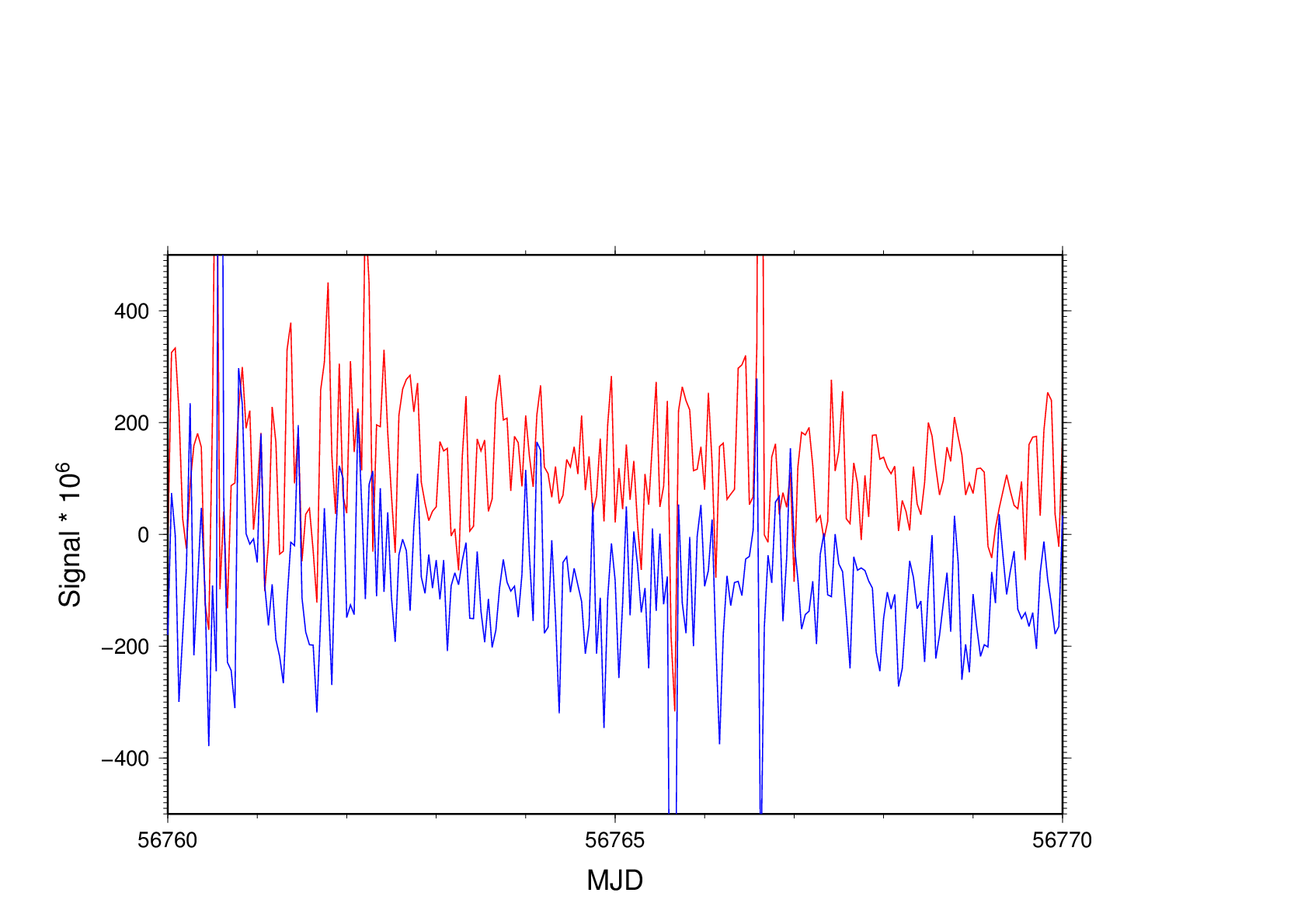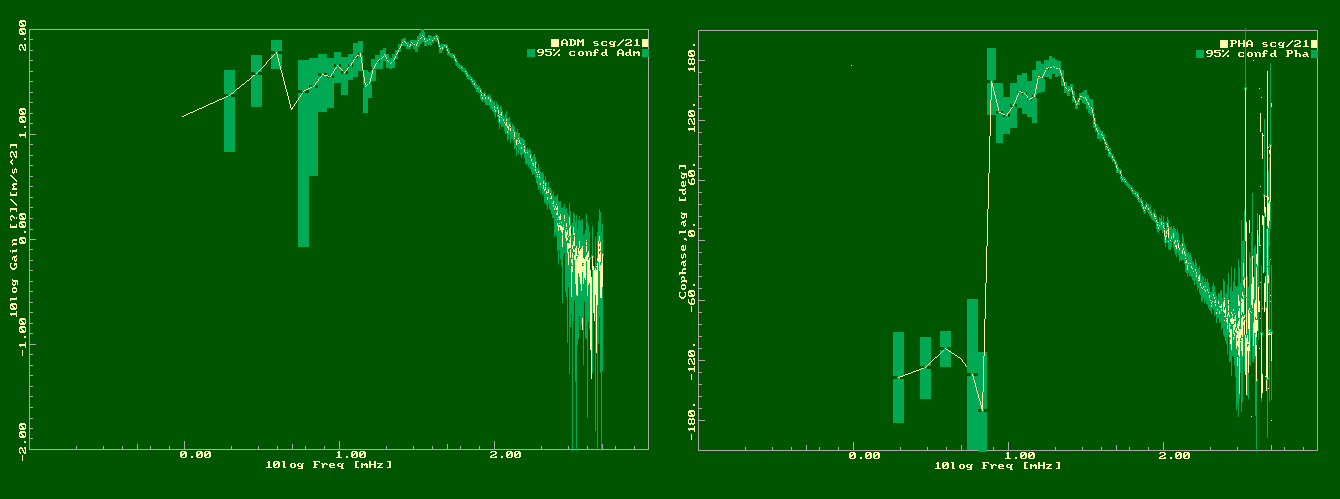Tilt control
The SCG is equipped with a tilt control loop in order to keep it
vertical. The electric current that drives the actuators is a
measure for the tilt that the instrument is exposed to, most
vigorously when surface waves from large, distant earthquakes are
passing though the area. For instance the earthquake of April 12,
2014 (UTC 20:14:39 7.6 us-c000phx5 11.315 S 162.211 E SOLOMON
ISLANDS, source: USGS) engaged the tilt control with peak-to-peak
current values of 4.5 units (the ADC books them in Volt units).
Of course we want
to know how large the tilt has been. Read below, please.
We show diagrams from July 2009 up to yesterday, extended
daily.
Balance
- this is the signal of the verticality sensor
Power
- this is the feedback control
Balance shows spikes during teleseismic waves
Power shows a gradual trend, which is strikingly similar in the two
orthogonal directions.


Left diagram shows the feedback signal, "Power", right diagram the
sensor signal, "Balance".

Ten days in April, 2014: Zoomed Balance signals (separated by +100
and -100 units, respectively and scaled up by 106.
A rough
tiltmeter calibration (order of magnitude)
As a calibration signal, we use the Onsala 3-component seismometer
operated by Uppsala university in their SNSN network. It's a 120s
broadband Guralp CMT3 model.
We take the Solomon Islands earthquake to do the calculations. The
seismograph signal, 4 hours long and starting at UTC 20:00 on
2014-04-12, is phase-restored, converted to acceleration, and
sub-sampled to 1 Hz.
A simultaneous pair of X and Y tilt power at 1 Hz sampling is
retrieved from the SCG data base. The four possible pairs
(seismograph East and North versus SCG tilt-X and tilt-Y) are
examined in a cross-spectrum analysis. Here is one example, the gain
and phase spectrum of the pair SCG tilt-Y / Seis E.

The units of the seismogram are mm/s2. The admittance
found at 20-40 mHz is order of 101.8 = 63 V/(mm/s2)
The tangent of the tilt angle is the horizontal acceleration divided
by earth gravity 9.81 m/s2. To arrive at arc seconds, the
scale factor to be applied to the SCG tilt channel is
180 × 3600/(9810 × 101.8 × π ) = 1/3.0 [arc sec/V]
and the tilt angle peak-to-peak in the earthquake was 1.5 seconds of
arc:
tslq d/A2_TY-Pwr_140412-20-24-1s.ts -D -S/3 -C3
<gettsn>d> 21
->d/A2_TY-Pwr_140412-20-24-1s.ts<- N= -14400 14400
<gettsn>d> julfil,timef,dt = 56759
2.0000E+01 2.7778E-04 date: 2014-04-12
<GetTs->>> File MRS= -9.99999D+04,
test,new= F T
<GETTS->>> #21: d/A2_TY-Pwr_140412-20-24-1s.ts
N=14400, Skip=0, Miss=0, Val=14400
<GETTS->>> Epoch set: 2014-04-12 - Return t0, dt
= 2.0000E+01 [h] 1.0000000E+00 [s]
<GETTS->>> Leap-seconds: 0
<ScalTs>>> Factor= 3.3333D-01 length=
14400 Miss.rec.: 0
<main-->>> after trunc, n,t0= 14400
20.0000000000000
<Main-->>> Remove=T DC-value=
2.0193D+00 from column 1
<Main-->>>
RMS-dev= 8.3070D-02 from column 1
<Main-->>> Min =
-7.5919E-01 at 5425 D T = 2014 04
12 21 30 24 000
<Main-->>> Max
= 6.6547E-01 at 5415 D T
= 2014 04 12 21 30 14 000
<Main-->>> Sampling rate =
2.777778E-04 1.000000E+00
<Main-->>> t0 from epoch =
2.000000E+01 7.200000E+04
<Main-->>> File begin: 2014 04 12 20 00 00
MDJ=56759
<Main-->>> File end: 2014 04
12 23 59 59 MDJ=56759
<Main-->>> d/A2_TY-Pwr_140412-20-24-1s.ts
Total_miss=0, N=14400, Val=14400, Duration=4.000000E+00



